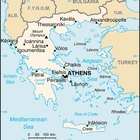Because of increasing global mobility, family members often move farther and farther away from the communities they grew up in. The practice of holding family reunions helps assemble branches and generations of families together, normally helped along by organized activities and meals.
History
In addition to being a popular leisure activity, family reunions are advocated by organizations such as genealogical societies as a way to connect often distant points in familial relationships. Reunions help people meet relatives they might not otherwise come in contact with. Many family reunions incorporate genealogical or other family history presentations. Family reunions have even been called for from the Oval Office: In 1985, President Reagan (in Proclamation 5351) marked the period each year between Mother's Day and Father's Day as Family Reunion Month in recognition of the work done to return runaway children to their homes.
Features
Family reunions are typically organized around a central location, such as a historic family home or in a town in which much of the family once resided. A committee of family members plans the schedule and particulars of the event and then invites other family members. Reunions should be planned long enough to allow for some family members to come cross country or even from other countries. Once gathered, the members of the extended family typically engage in shared meals and favorite activities, such as sports and other games, music and worship.
Time Frame
Family reunions are normally associated with times of good weather. However, Northern families might, for instance, gather to enjoy winter traditions such as sledding and ice fishing. If a family's reunion is a recurring event, it is normally scheduled periodically (for example, every other first weekend in June) so family members can plan for the event well in advance.
Significance
Reunions are a time when children can meet and interact with grandparents who they may have moved away from as well as to interact with family members who are a part of their own history. Reunions are a time for babies to be introduced to relatives getting on in years, for middle-aged family members to reflect on their accomplishments and for up-and-coming youngsters to share their plans for the future. Reunions might also be used as time to share family traditions, such as crafting or joining together in shared beliefs.
Considerations
In planning your family reunion, it is first important to recruit other family members to help, trying to represent the family and its sides as broadly as possible. By planning well in advance, try to build a consensus date for the event, especially if this is your family's first reunion. Decide how many people you'd like to attend, but try not to be exclusionary because reunions should be about coming together. Plan different activities and consider food and sleeping arrangements. Finally, send out invites with a firm RSVP date so you can join the millions every year who engage in this family-strengthening tradition.
Related Articles

How to Plan a Church Anniversary

Traditional French Easter Food

History of African Peanut Soup

African American Family Reunion Ideas

Traditional Hawaiian Diet
Best Time to Visit Jamaica

How to Figure Out My Scottish Clan

African Food Facts

What Is the Meaning of Flag Day in the ...

Facts About Italian Cuisine

Young Single LDS Adult Activities

African American Holidays & Traditions

Types of Social Clubs

How to Take a Family Vacation With ...

Staple Foods in Greek Culture

Family Conflict Examples
Free Things to Do in Fredericksburg, ...

The Difference Between First and Second ...

Rules for a Social Club

How to Start a High School Alumni ...
Resources
Writer Bio
Erik Steel is a graduate of the University of Michigan, earning his bachelor's degree in Russian. Steel has worked as writer for more than four years and has contributed content to eHow and Pluck on Demand. His work recently appeared in the literary journal "Arsenic Lobster."